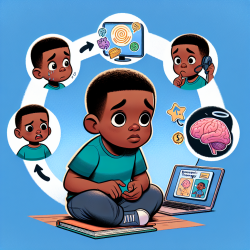Introduction
The Kahnawake Schools Diabetes Prevention Project (KSDPP) offers a remarkable case study of community-based participatory research (CBPR) that can inspire practitioners seeking to improve their skills and impact. Anchored in social movement theories, this initiative demonstrates how collective action and community mobilization can lead to systemic change. By understanding the evolution and outcomes of KSDPP, practitioners can gain insights into implementing effective CBPR strategies.
The Power of Community-Based Participatory Research
CBPR is a collaborative approach that involves community stakeholders as equal partners in the research process. It aims to address power imbalances in traditional research and focuses on improving community health outcomes. The KSDPP exemplifies how CBPR can be successfully implemented, particularly within marginalized communities, such as Indigenous populations, by fostering respectful relationships and shared control over health conditions.
Lessons from the Kahnawake Schools Diabetes Prevention Project
The KSDPP, rooted in the Kanien’kehá:ka (Mohawk) community, provides a comprehensive framework for practitioners to understand the stages of community mobilization and the importance of cultural values in health promotion. Here are some key takeaways:
- Emergence: The project began with community leaders recognizing diabetes as a preventable issue. By involving academic partners and developing a shared vision, they laid a strong foundation for future action.
- Coalescence: As the project gained momentum, it expanded its base by recruiting new leaders and forming alliances with local organizations. This stage emphasized the importance of collaborative leadership and strategic planning.
- Momentum: KSDPP reached its peak by becoming a recognized leader in diabetes prevention. The project successfully disseminated its vision and expanded its scope, engaging various community sectors and increasing public support.
- Maintenance and Integration: In its current stage, KSDPP faces challenges such as reduced visibility and resource constraints. However, its vision has been integrated into community norms, and new leadership is emerging to sustain its impact.
Encouraging Further Research and Implementation
Practitioners can draw valuable insights from the KSDPP's use of social movement frameworks to evaluate and enhance CBPR initiatives. By identifying intermediate outcomes and areas for improvement, practitioners can better plan and assess their projects. Moreover, the KSDPP highlights the importance of aligning health promotion strategies with cultural values and community priorities.
Conclusion
The KSDPP serves as a powerful example of how CBPR can drive social change and improve health outcomes. Practitioners are encouraged to explore social movement theories further and apply these lessons to their initiatives. By doing so, they can foster sustainable community mobilization and achieve meaningful health improvements.
To read the original research paper, please follow this link: Understanding community-based participatory research through a social movement framework: a case study of the Kahnawake Schools Diabetes Prevention Project.










